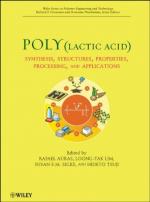|
This section contains 503 words (approx. 2 pages at 300 words per page) |

|
Lactic acid is a naturally occurring hydroxy-carboxylic acid. It occurs in many acidic fermentation products, e.g., silage, sour milk, sauerkraut, and pickles, and also has numerous commercial uses such as in drug preparation, acidification of wine for vinegar production, preparation of foods, plastics, and lacquers.
In physiology, lactic acid is produced as the end product of anaerobic respiration or glycolysis in muscle. Anaerobic respiration is generally defined as respiration in the complete absence of oxygen, but this is not the case for muscles. They are able to carry out anaerobic respiration even when oxygen is present. In skeletal muscle, respiration is normally aerobic and oxygen is used to metabolise glucose. As the skeletal muscle contracts during exercise, the rate of aerobic respiration increases so as to provide more energy for muscle contraction. This is facilitated by a concomitant increase in the supply of oxygen through...
|
This section contains 503 words (approx. 2 pages at 300 words per page) |

|


